In the quest for healthier, smoother skin, pore size often becomes a central concern. Enlarged pores, while common and typically harmless, can affect how we perceive our skin texture and overall appearance. Among the wide array of dermatological ingredients available, retinol stands out as one of the most scientifically validated and clinically effective options for improving skin tone and texture. But how exactly does retinol help minimize pores, and what are the best ways to use it for visible, sustained results? This article explores the dermatological science behind retinol and pores, with evidence-backed insights into how this powerhouse compound can transform your skin over time.
You may also like: How to Choose Skin Care for Fine Lines: Evidence-Based Tips for Healthier, Younger-Looking Skin
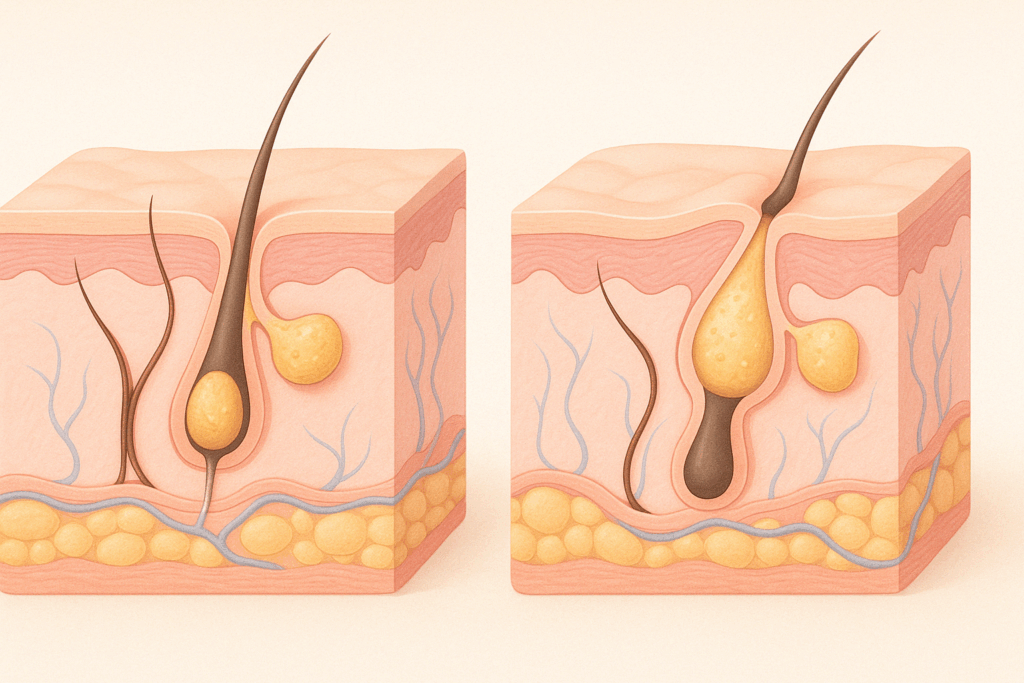
Understanding What Pores Are and Why They Appear Enlarged
Pores are tiny openings in the skin that house hair follicles and sebaceous glands, which produce the natural oils necessary for skin health. While every person has pores, some individuals are more prone to visibly enlarged ones. Factors such as genetics, excess sebum production, sun damage, hormonal fluctuations, and aging all contribute to pore dilation. When pores become clogged with oil, dead skin cells, or environmental pollutants, they can stretch, resulting in a more prominent appearance. Over time, the skin’s natural loss of collagen and elastin also reduces structural support around pores, allowing them to sag and widen further.
This is where many turn to skincare products promising to tighten or shrink pores, but not all treatments yield measurable or lasting effects. Among the most promising topical agents supported by dermatological research is retinol—a derivative of vitamin A renowned for its cell-regenerating and collagen-boosting properties. Unlike astringents that only provide a temporary tightening effect, retinol works at a cellular level to deliver long-term benefits, making it particularly effective for addressing the root causes of large pores.
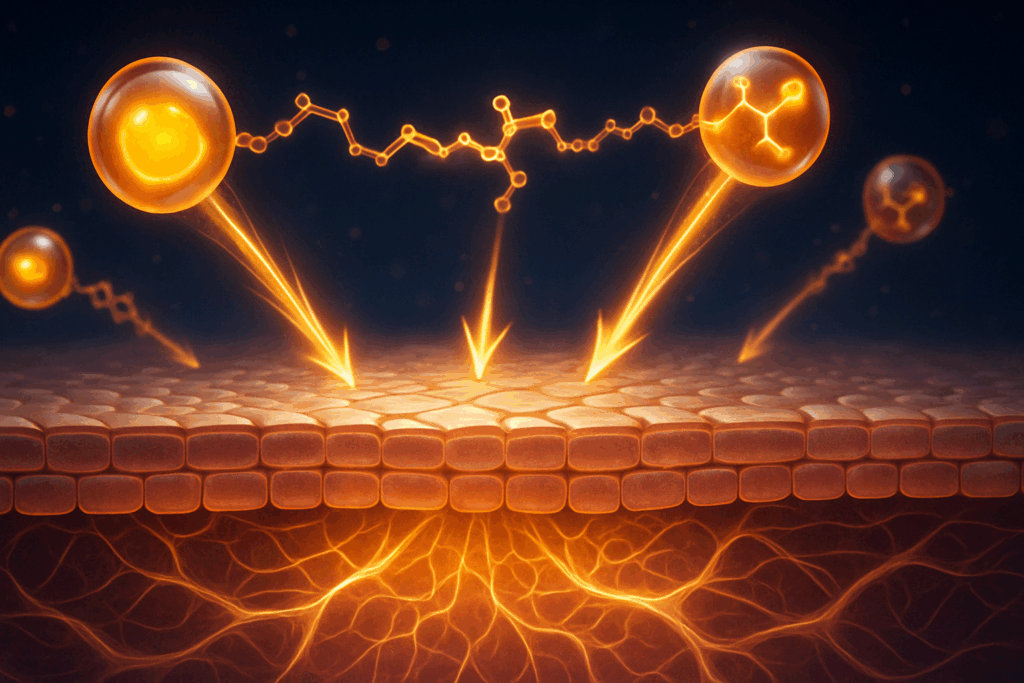
How Retinol Works at the Cellular Level
Retinol, a form of retinoid, exerts its effects by binding to retinoic acid receptors in the skin, which modulate gene expression involved in cell proliferation, differentiation, and repair. This biochemical activity accelerates skin cell turnover, promotes the shedding of dead skin cells, and stimulates collagen synthesis in the dermis. As a result, skin becomes smoother, firmer, and more even in tone and texture over time.
One of the key reasons dermatologists recommend retinol for large pores is its ability to reduce comedone formation. Comedones—clogged pores that can develop into whiteheads or blackheads—stretch the pore walls and contribute to their enlarged appearance. By preventing the buildup of keratin and sebum within the follicle, retinol helps keep pores clear and less dilated. Moreover, its anti-inflammatory effects further support skin health by calming irritation that might otherwise exacerbate pore size.
The connection between retinol and pores has been well-documented in clinical settings, where consistent use of topical retinoids has shown marked improvement in pore visibility and overall skin clarity. These effects do not appear overnight but rather develop gradually with long-term use, reinforcing the importance of consistency in any skincare regimen that includes retinol.
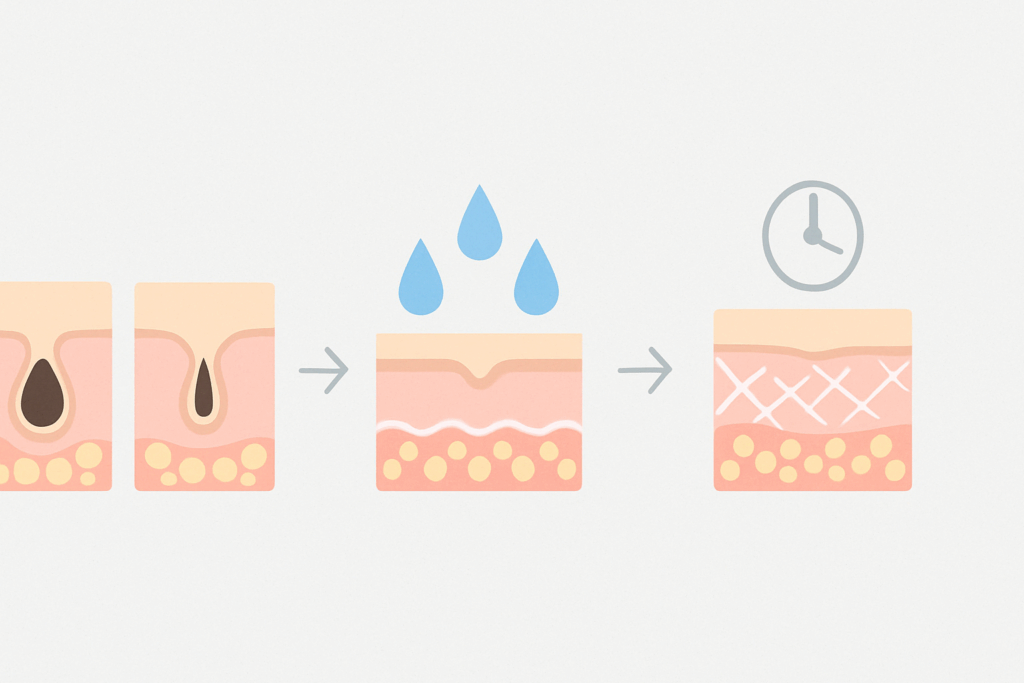
Does Retinol Help with Pores? What the Science Says
A common question among consumers and patients alike is, “Does retinol help with pores?” The short answer is yes—but it helps in specific, scientifically measurable ways that depend on both the concentration used and the consistency of application. Studies have shown that retinoids, including over-the-counter retinol and prescription-strength tretinoin, can reduce the appearance of large pores by normalizing follicular epithelial desquamation and enhancing dermal matrix production.
One randomized controlled trial published in the Journal of Dermatology found that subjects using a retinol-based cream experienced not only a reduction in acne lesions but also a visible decrease in pore size after 12 weeks of regular use. This aligns with dermatological observations that retinol, through its keratolytic action, removes the dead skin layer that can accumulate around pores and make them more prominent.
Additionally, retinol enhances the skin’s ability to maintain hydration by improving barrier function. When skin is well-hydrated and supported with essential lipids, it appears plumper and more refined—helping further reduce the look of pores. This effect underscores the importance of integrating retinol into a comprehensive skincare routine that includes moisturization and sun protection.
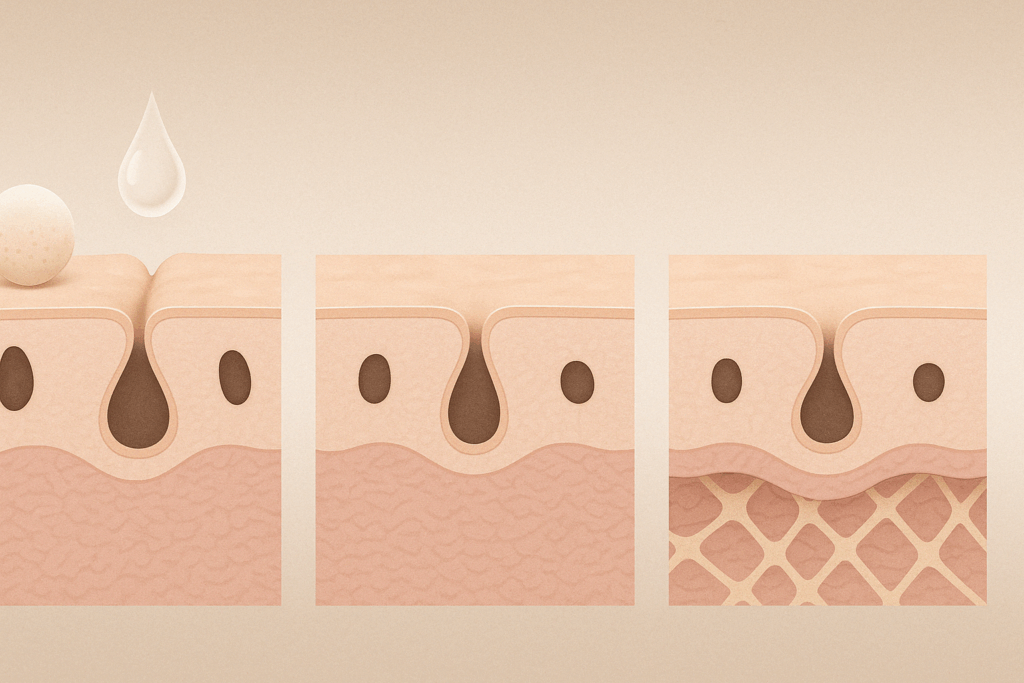
Why Retinol for Large Pores Works Better Than Most Alternatives
The skincare market offers numerous products that claim to minimize pores, ranging from clay masks to exfoliating scrubs to pore-tightening serums. However, few of these offer the combination of structural and surface-level benefits that retinol provides. Retinol’s multi-mechanistic action—targeting clogged pores, stimulating collagen, and regulating skin cell turnover—makes it one of the best retinol-based approaches to reduce pores over time.
Many astringents and exfoliants offer quick results but can damage the skin’s protective barrier or cause rebound oil production when overused. In contrast, retinol promotes gradual improvement, working below the surface to fortify the dermal support matrix. This internal reinforcement helps prevent the cyclical stretching of pores that can occur when skin elasticity is compromised.
Another reason why retinol for large pores remains so effective is its cumulative benefit. Unlike treatments that plateau or become less effective over time, retinol continues to deliver results the longer it is used. With regular application, users often report increasingly refined skin texture and reduced visibility of pores, along with a more even skin tone and diminished fine lines.
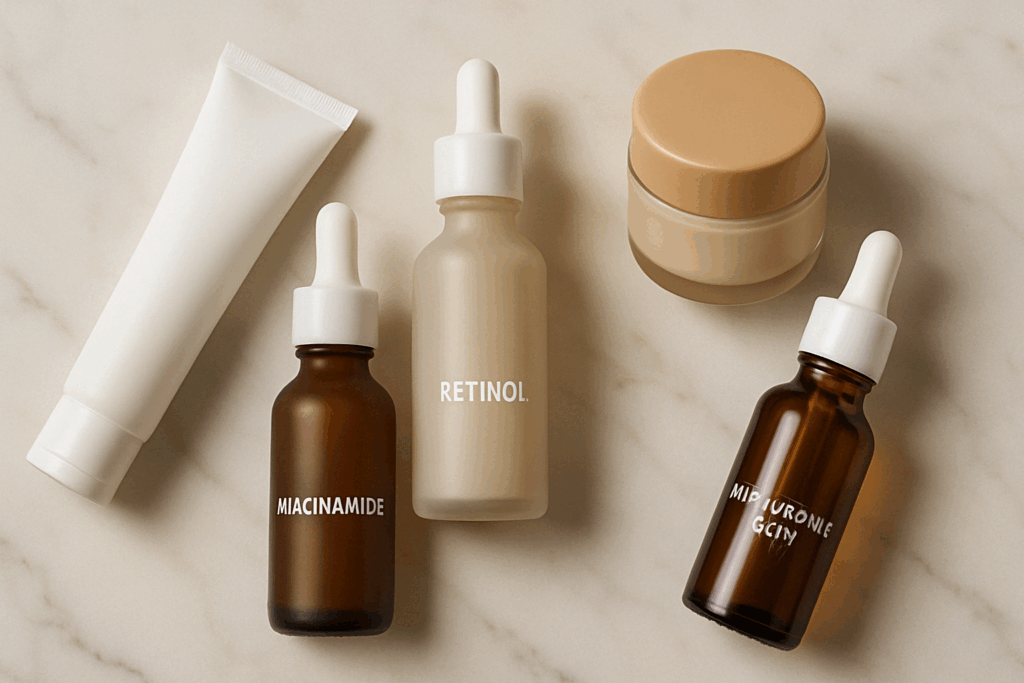
Best Retinol to Reduce Pores: What to Look for in a Product
Choosing the best retinol to reduce pores involves understanding your skin type, tolerance, and long-term skincare goals. While prescription-strength retinoids like tretinoin offer potent results, they may be too irritating for some individuals, particularly those with sensitive or reactive skin. For most users, over-the-counter formulations with stabilized retinol concentrations between 0.25% and 1.0% strike an ideal balance between efficacy and tolerability.
Encapsulated retinol products are often recommended for beginners or those prone to irritation, as they deliver the active ingredient slowly over time, minimizing harsh side effects. Additionally, combining retinol with soothing agents like niacinamide, ceramides, and hyaluronic acid can enhance its tolerability and effectiveness. A well-formulated retinol serum or cream will not only target enlarged pores but also support the skin’s overall barrier function, reducing the risk of dryness or inflammation.
When assessing retinol products, it’s also essential to consider packaging. Retinol is sensitive to light and air, which can degrade its potency. Choose products housed in opaque, airtight containers to ensure stability and effectiveness throughout their shelf life. With these considerations in mind, finding the best retinol to reduce pores becomes a more manageable—and more science-informed—task.
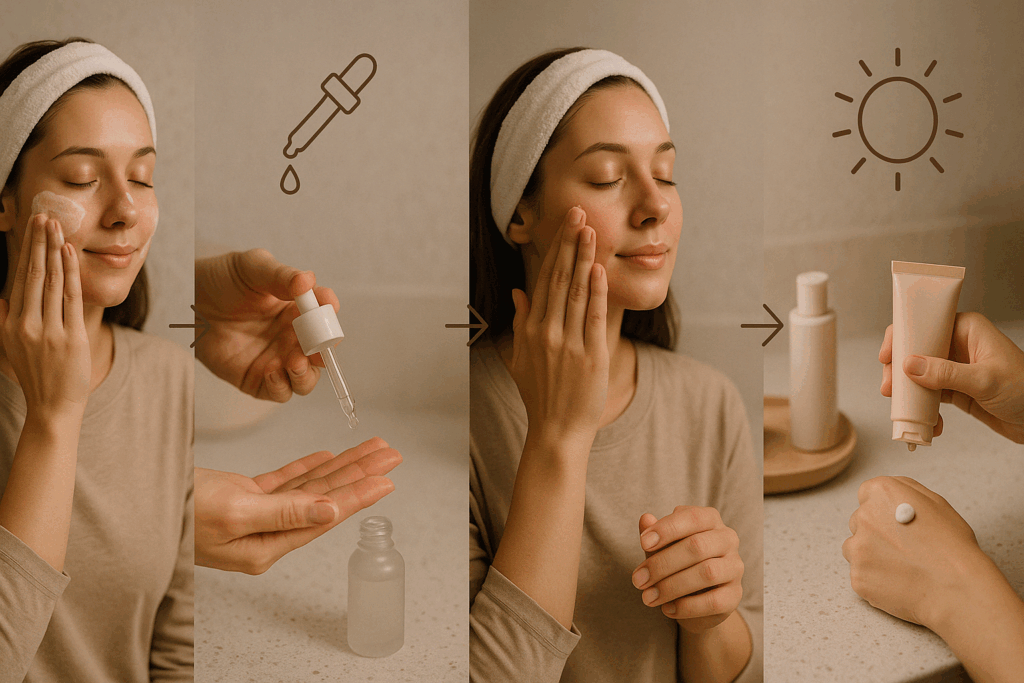
How to Use Retinol Safely and Effectively for Pore Minimization
Using retinol safely and effectively is crucial for achieving results without compromising skin health. Start by applying a small amount—typically a pea-sized portion—once or twice a week, gradually increasing frequency as your skin builds tolerance. It’s important to apply retinol at night, as it can increase skin sensitivity to sunlight and break down when exposed to UV rays.
Always follow retinol application with a nourishing moisturizer to maintain hydration and mitigate dryness or peeling, especially during the initial adjustment period. Equally vital is the daily use of broad-spectrum sunscreen with an SPF of at least 30. Retinol can thin the stratum corneum, the skin’s outermost layer, making it more vulnerable to UV damage, which can in turn worsen the very issues it is meant to address.
Avoid layering retinol with other potentially irritating ingredients such as alpha hydroxy acids (AHAs), beta hydroxy acids (BHAs), or benzoyl peroxide unless advised by a dermatologist. Overloading the skin with actives can disrupt the barrier and lead to inflammation or increased sensitivity. Instead, build a simple, supportive routine centered around retinol and replenishing products to allow the skin to adapt and flourish.
Retinol and Pores: What to Expect Over Time
Managing expectations is key when incorporating retinol into a skincare routine aimed at pore refinement. While some individuals may notice improvements in texture and tone within a few weeks, significant changes in pore visibility typically require consistent use over several months. As retinol encourages collagen production and enhances skin elasticity, pores appear smaller not because they have physically shrunk, but because they are less distended and more supported.
A long-term commitment to retinol also yields benefits beyond pores. With continued use, many individuals report brighter skin, reduced hyperpigmentation, and fewer breakouts—all of which contribute to a more even and refined complexion. These cumulative effects reinforce the value of retinol as a cornerstone of evidence-based skincare, particularly for those concerned with skin aging and pore size.
Regular follow-up with a dermatologist can help tailor retinol use to your evolving skin needs, especially as tolerance builds and the skin becomes more resilient. Adjusting concentrations, formulations, or complementary products can maximize results while minimizing side effects, ensuring that retinol remains a sustainable and effective part of your skincare strategy.
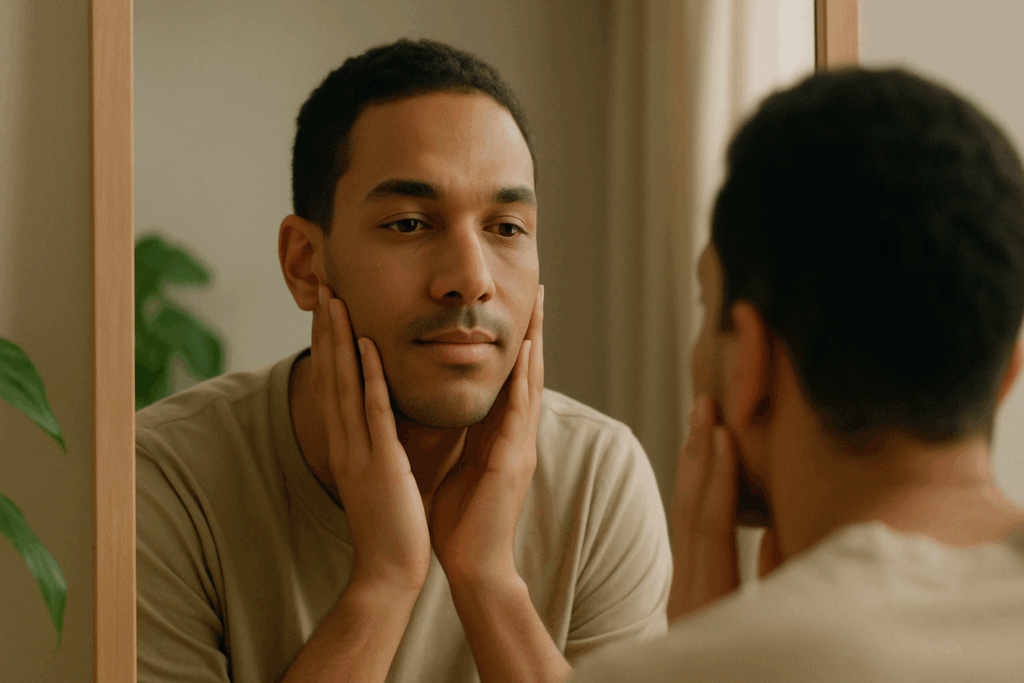
The Psychological Impact of Skin Texture and How Skincare Affects Mental Well-Being
While much of the focus on retinol and pores is grounded in biological mechanisms and dermatological science, it’s important not to overlook the psychological dimension. Skin appearance can significantly influence self-esteem, social confidence, and overall mental well-being. Individuals struggling with persistent skin texture issues—such as enlarged pores—often experience heightened self-consciousness that may impact social interactions and quality of life.
In this context, the use of clinically effective skincare ingredients like retinol is not merely cosmetic. For many, it represents a form of self-care and empowerment. Knowing that a regimen is backed by science can enhance a sense of control over one’s skin health, fostering both physical and emotional resilience. Skincare routines can also serve as daily rituals that promote mindfulness and self-soothing—important components in supporting mental health.
Particularly under the umbrella of cognitive well-being, there’s growing recognition of the relationship between skin health and psychological outcomes. Emerging fields like psychodermatology explore how skin disorders interact with emotional states, revealing that improvements in visible skin concerns can correspond with reductions in anxiety and depressive symptoms. By addressing common issues like large pores with proven solutions, individuals may experience a greater sense of ease and self-acceptance.
Frequently Asked Questions: Retinol and Pore Refinement
1. Can retinol improve pore appearance on oily skin types without increasing irritation?
Yes, retinol can benefit oily skin types by regulating sebum production, which plays a direct role in the appearance of enlarged pores. Oily skin often contributes to pore blockage and stretching, but retinol helps normalize the rate at which skin cells turnover and shed. This process prevents buildup inside the pores, which is a common trigger for pore enlargement in sebum-rich skin. However, since oily skin can still be sensitive, it’s essential to introduce retinol slowly—starting with low concentrations and buffering with a gentle moisturizer can reduce the risk of irritation. Many people exploring retinol and pores are surprised to find that, when used appropriately, retinol enhances clarity and controls oil without aggravating sensitivity.
2. Are there specific forms of retinol that work better for large pores in sensitive skin?
For those with sensitive skin, using encapsulated or slow-release retinol formulations is often the best approach. These versions deliver the active ingredient gradually, minimizing the risk of inflammation or peeling. When selecting retinol for large pores, individuals with reactive skin should also consider products that include barrier-supportive ingredients like squalane, allantoin, or niacinamide. These supporting agents can help the skin tolerate retinol more effectively while still reaping the pore-refining benefits. Choosing the best retinol to reduce pores doesn’t always mean going for the highest concentration—it means finding the formulation that balances efficacy and comfort.
3. How long should you use retinol before noticing improvements in pore size?
Visible improvements in pore appearance typically begin to emerge after 8 to 12 weeks of consistent retinol use, although this timeline varies depending on skin type and product strength. While some users may see initial changes in skin texture within a few weeks, more dramatic pore refinement results from ongoing use. Retinol and pores have a gradual but well-supported relationship—its action on collagen stimulation and cell turnover takes time. Those seeking the best retinol to reduce pores should be prepared for a long-term commitment to see optimal outcomes. Skipping days or constantly switching products can delay results and reduce efficacy.
4. What lifestyle changes can amplify the effects of retinol for minimizing pores?
Retinol works best when paired with a healthy skincare and lifestyle routine. Staying hydrated, maintaining a balanced diet rich in antioxidants, and avoiding environmental toxins such as cigarette smoke can all support collagen health and skin elasticity. Additionally, managing stress levels is important, as chronic stress can increase sebum production and slow cellular regeneration. Regular cleansing and consistent sunscreen use are also vital, especially when using retinol for large pores. The more holistic the approach, the more noticeable and lasting the improvement in pore appearance will be.
5. Is it safe to use retinol and professional treatments like chemical peels or microneedling for pore reduction?
Yes, combining retinol with in-office treatments can yield superior results when managed correctly. Dermatologists often recommend spacing treatments apart—for instance, pausing retinol use several days before and after a chemical peel or microneedling session. These procedures, especially when combined with topical actives like retinol, can increase collagen density and tighten the skin matrix surrounding pores. However, it’s crucial to follow professional guidance, as overuse can compromise the skin barrier. For those exploring advanced strategies to address retinol and pores, combining modalities under medical supervision can lead to deeper, longer-lasting improvements.
6. What role does sun exposure play in counteracting retinol’s pore-refining effects?
Excessive sun exposure not only damages the skin’s collagen reserves but also significantly weakens the pore-reducing benefits of retinol. Ultraviolet radiation breaks down collagen and elastin, making pores appear larger and more irregular over time. Since retinol increases photosensitivity, failing to use adequate sun protection can reverse progress and trigger inflammation. That’s why daily sunscreen use is non-negotiable when using retinol for large pores. To preserve the benefits of the best retinol to reduce pores, it’s essential to pair the regimen with SPF 30 or higher, reapplied throughout the day as needed.
7. Can retinol reduce the visibility of acne scars and their impact on pore structure?
Yes, one of retinol’s lesser-known benefits is its ability to smooth the skin’s surface over time, including shallow acne scars that often distort pore structure. These scars can cause shadows or texture irregularities that emphasize enlarged pores. By encouraging dermal remodeling and stimulating fibroblasts to produce new collagen, retinol helps to lift and soften the appearance of post-acne marks. For individuals targeting both acne scarring and pore visibility, retinol and pores become a synergistic treatment focus. With consistent use, many users experience a more uniform skin texture and a reduction in visible scarring.
8. Are natural or plant-based alternatives to retinol effective for minimizing pores?
While traditional retinol remains the gold standard, some plant-based alternatives—such as bakuchiol—have shown promise in improving skin texture with fewer side effects. These compounds may offer a gentler path for those unable to tolerate conventional retinoids. However, their ability to address retinol for large pores is generally less robust and slower in action. Still, they can be beneficial as complementary or interim solutions in a broader pore-refining regimen. Consumers seeking more natural solutions may find success with these options, especially when paired with non-irritating exfoliants and barrier-strengthening moisturizers.
9. How does long-term use of retinol affect skin resilience and pore elasticity?
Over time, consistent retinol use strengthens the skin’s supportive network by enhancing collagen and elastin production. This structural reinforcement makes the skin more resilient, allowing pores to retain a tighter, more compact shape even under environmental or hormonal stressors. Rather than simply reducing oil or exfoliating the surface, retinol influences the architecture of the skin itself. When looking at the long-term relationship between retinol and pores, this cumulative strengthening effect is one of the most valuable. Many users who continue retinol for years note not only reduced pore visibility but also fewer fine lines and a more supple texture.
10. What future innovations in skincare might enhance retinol’s effectiveness for pore treatment?
The future of skincare is likely to bring increasingly sophisticated delivery systems for retinol, such as nano-encapsulation and bio-retinoid hybrids that maximize efficacy while minimizing irritation. Scientists are also exploring synergistic blends—combining retinol with peptides, growth factors, or microbiome-supporting agents to optimize results. These innovations could further refine how we target retinol for large pores, offering quicker results with improved skin compatibility. Additionally, AI-driven skin diagnostics may soon help users customize their retinol regimens down to the molecular level. As the science behind retinol and pores continues to evolve, consumers can expect smarter, more adaptive solutions in their pursuit of smoother, healthier skin.
Conclusion: The Long-Term Benefits of Retinol for Smoother Skin and Smaller Pores
Understanding the connection between retinol and pores unlocks a pathway to both visible and structural improvements in skin health. Through its ability to stimulate collagen, increase cell turnover, and regulate sebum production, retinol offers a scientifically sound, long-term solution to managing the appearance of large pores. Unlike quick-fix products that deliver fleeting results, retinol works from the inside out—reinforcing the skin’s architecture and refining its surface over time.
For those seeking the best retinol to reduce pores, the key lies in choosing formulations suited to their skin type, starting slowly, and committing to consistent use. When paired with moisturizers, sunscreen, and a thoughtful skincare routine, retinol can gradually transform skin texture, reduce pore visibility, and enhance overall complexion quality.
Moreover, the benefits of retinol extend beyond skin deep. As part of a holistic approach to health and wellness, it supports mental and emotional well-being by improving the way individuals perceive themselves. In this way, retinol is not only a cosmetic asset but a tool for cultivating confidence, resilience, and self-care. With its unique combination of biological efficacy and psychological support, retinol remains one of the most valuable ingredients in modern dermatology—and a proven ally for anyone seeking smoother, healthier skin through science-backed skincare.
Was this article helpful? Don’t let it stop with you. Share it right now with someone who needs to see it—whether it’s a friend, a colleague, or your whole network. And if staying ahead on this topic matters to you, subscribe to this publication for the most up-to-date information. You’ll get the latest insights delivered straight to you—no searching, no missing out
Further Reading:
Retinol: Cream, Serum, What It Is, Benefits, How To Use
How Does Retinol Work? Facts, Side Effects, and More
Retinol Has Many Skin Benefits. Here’s How to Use It.
Disclaimer
The information contained in this article is provided for general informational purposes only and is not intended to serve as medical, legal, or professional advice. While Health11News strives to present accurate, up-to-date, and reliable content, no warranty or guarantee, expressed or implied, is made regarding the completeness, accuracy, or adequacy of the information provided. Readers are strongly advised to seek the guidance of a qualified healthcare provider or other relevant professionals before acting on any information contained in this article. Health11News, its authors, editors, and contributors expressly disclaim any liability for any damages, losses, or consequences arising directly or indirectly from the use, interpretation, or reliance on any information presented herein. The views and opinions expressed in this article are those of the author(s) and do not necessarily reflect the official policies or positions of Health11News.